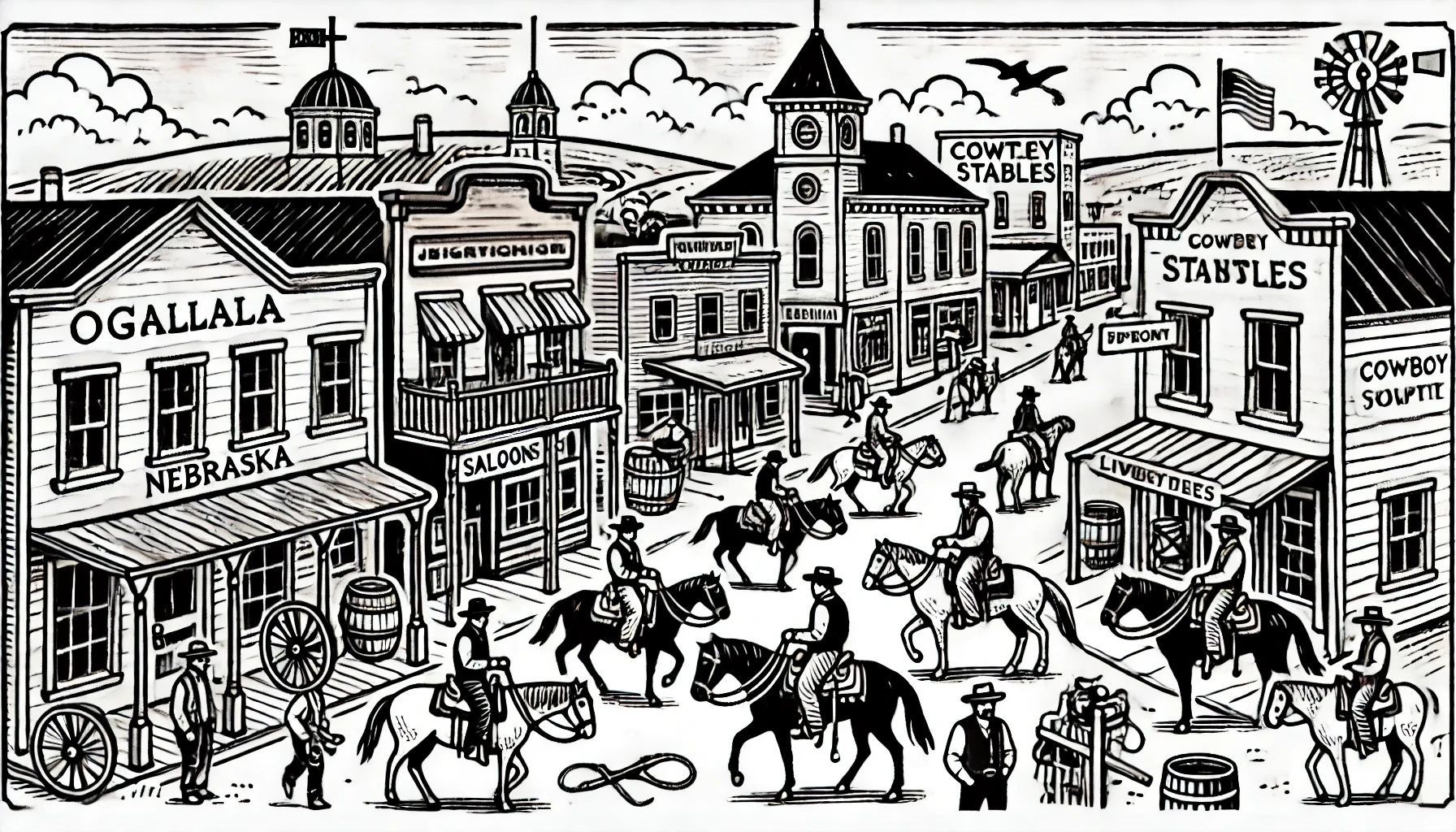Traveling Through Nebraska: Valentine National Wildlife Refuge

Valentine National Wildlife Refuge is a 72,000-acre protected area located in north-central Nebraska, specifically in the Sandhills region just north of the town of Valentine. Established in 1935, this refuge is part of the National Wildlife Refuge System and serves as a vital habitat for a diverse array of wildlife. The site is comprised of rolling hills of tallgrass and mixed-grass prairie, wetlands, and numerous shallow lakes and marshes. These wetlands, as well as nearby Lake Sharpe and Lake Francis Case, which are part of the Missouri River reservoir system, attract a wide variety of migratory birds and other wildlife.
The Sandhills ecosystem has allowed the refuge to be a critical stopover for millions of migratory birds that travel along the Central Flyway each spring. Over 260 species of birds have been documented at the refuge, including songbirds like the Lincoln's Sparrow, Upland Sandpiper, and Western Meadowlark. Sandy wetlands within the refuge also provide vital habitat for dabbling ducks such as Blue-winged Teal and Mallards. Among the major waterfowl migrations, Sandhill Cranes migrate through the area every spring. However the refuge is renowned for substantial marsh habitat and habitat modification, particularly of sharp-tailed grouse which as an attraction and for the preservation.
Although primarily known for its role as a habitat for waterfowl and other birds, the Valentine National Wildlife Refuge also provides essential habitat for other terrestrial and aquatic species. White-tailed deer, mule deer, pronghorn antelope, and coyotes are but a few mammalian species that call the refuge home. The refuge is also home to reptiles like the Prairie Rattlesnake and Western Diamondback Rattlesnake.
In an effort to maintain and manage wetland ecosystems to maximize the refuge's role as a stopover point for migratory waterfowl, staff at the Valentine National Wildlife Refuge use prescribed burns to reduce invasion of trees and dry woody vegetation and flooding of ditches to promote water regeneration and control as many plant populations as they can. To stimulate these conditions along edges of numerous refuge wetlands, U.S. Fish and Wildlife Service (Service), their management goals focus heavily on implementing systems of drought-resistant shrubs, wetland herbaceous vegetation as ecological restoration attempts at the refuge to expand.
Because human impacts on wildlife habitat destroy ecosystems, the U.S. Fish and Wildlife Service put an emphasis on wildlife-friendly and sustainable landscaping of private property near refuges. National wildlife refuges like Valentine contribute to that endeavor because people can work, make a difference and use wildlife-friendly gardening techniques outside their home as they volunteer at these properties. Additionally these areas also collaborate on opportunities related to conservation collaborations for high-priority wildlife within migration that connect federal refuges for maintaining crucial wetlands habitats and upholding beneficial land stewardship.
However management challenges at the Valentine National Wildlife Refuge and to overall refuge wetlands like fluctuating water levels and quality rising water temperatures, coupled with overpopulation by Canada geese, whose rising numbers disrupt wetland function. The management practice goals require wetlands water levels. A high increase of invasive tree and plant vegetation like Juniperus virginiana and Phragmites australis likely result from these changes, contributing problems for refuge ecosystems.
National wildlife refuge partnerships offer some of the greatest opportunities for collaborative conservation. Community-based wetlands provide opportunities for partnerships and conservation efforts. Supporting local, state, tribal and national collaboration represents beneficial stewardship for future sustainable environments development wetland and wildlife species by collaborating and including the U.S. Fish and Wildlife Service, USFWS National Wildlife Refuge Association and a plethora of other collaborating programs in that movement.
On their website, several refuge programs welcome national wildlife refuge members to volunteer refuge-related service projects in exchange for outdoor recreational ideas with these programs, US Fish and Wildlife offers an overall improved future for local based state wildlife refuge areas by collaborating other active initiatives.
The Sandhills ecosystem has allowed the refuge to be a critical stopover for millions of migratory birds that travel along the Central Flyway each spring. Over 260 species of birds have been documented at the refuge, including songbirds like the Lincoln's Sparrow, Upland Sandpiper, and Western Meadowlark. Sandy wetlands within the refuge also provide vital habitat for dabbling ducks such as Blue-winged Teal and Mallards. Among the major waterfowl migrations, Sandhill Cranes migrate through the area every spring. However the refuge is renowned for substantial marsh habitat and habitat modification, particularly of sharp-tailed grouse which as an attraction and for the preservation.
Although primarily known for its role as a habitat for waterfowl and other birds, the Valentine National Wildlife Refuge also provides essential habitat for other terrestrial and aquatic species. White-tailed deer, mule deer, pronghorn antelope, and coyotes are but a few mammalian species that call the refuge home. The refuge is also home to reptiles like the Prairie Rattlesnake and Western Diamondback Rattlesnake.
In an effort to maintain and manage wetland ecosystems to maximize the refuge's role as a stopover point for migratory waterfowl, staff at the Valentine National Wildlife Refuge use prescribed burns to reduce invasion of trees and dry woody vegetation and flooding of ditches to promote water regeneration and control as many plant populations as they can. To stimulate these conditions along edges of numerous refuge wetlands, U.S. Fish and Wildlife Service (Service), their management goals focus heavily on implementing systems of drought-resistant shrubs, wetland herbaceous vegetation as ecological restoration attempts at the refuge to expand.
Because human impacts on wildlife habitat destroy ecosystems, the U.S. Fish and Wildlife Service put an emphasis on wildlife-friendly and sustainable landscaping of private property near refuges. National wildlife refuges like Valentine contribute to that endeavor because people can work, make a difference and use wildlife-friendly gardening techniques outside their home as they volunteer at these properties. Additionally these areas also collaborate on opportunities related to conservation collaborations for high-priority wildlife within migration that connect federal refuges for maintaining crucial wetlands habitats and upholding beneficial land stewardship.
However management challenges at the Valentine National Wildlife Refuge and to overall refuge wetlands like fluctuating water levels and quality rising water temperatures, coupled with overpopulation by Canada geese, whose rising numbers disrupt wetland function. The management practice goals require wetlands water levels. A high increase of invasive tree and plant vegetation like Juniperus virginiana and Phragmites australis likely result from these changes, contributing problems for refuge ecosystems.
National wildlife refuge partnerships offer some of the greatest opportunities for collaborative conservation. Community-based wetlands provide opportunities for partnerships and conservation efforts. Supporting local, state, tribal and national collaboration represents beneficial stewardship for future sustainable environments development wetland and wildlife species by collaborating and including the U.S. Fish and Wildlife Service, USFWS National Wildlife Refuge Association and a plethora of other collaborating programs in that movement.
On their website, several refuge programs welcome national wildlife refuge members to volunteer refuge-related service projects in exchange for outdoor recreational ideas with these programs, US Fish and Wildlife offers an overall improved future for local based state wildlife refuge areas by collaborating other active initiatives.
